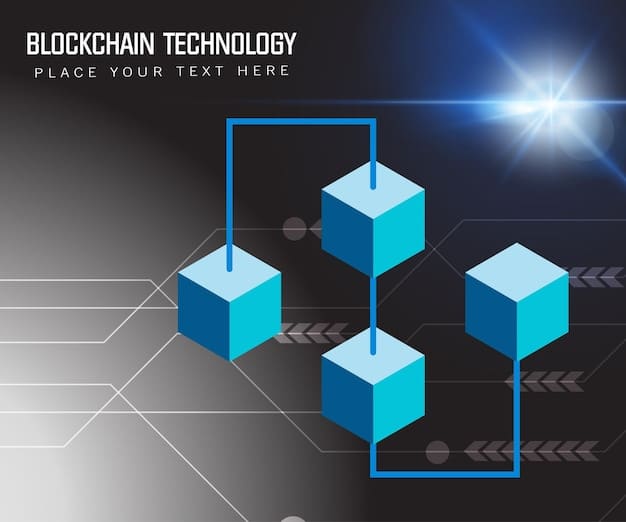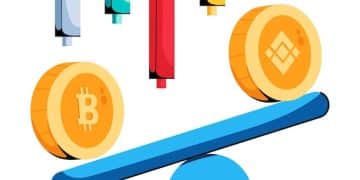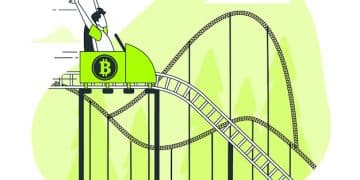Altcoin Portfolio Diversification: Optimize Risk Across Sectors

Altcoin portfolio diversification involves strategically allocating investments across various sectors within the cryptocurrency market to mitigate risk and enhance potential returns, ensuring a balanced approach to digital asset management.
Are you looking to navigate the volatile world of altcoins with greater confidence? Understanding altcoin portfolio diversification and how to allocate your funds across different sectors is crucial for optimal risk management and potential returns.
Understanding Altcoin Portfolio Diversification
Altcoin portfolio diversification is a strategy that involves spreading your investments across different types of altcoins. This approach aims to reduce the risk associated with investing in a single cryptocurrency, as different altcoins can react differently to market conditions.
By diversifying, you avoid putting all your eggs in one basket. This strategy doesn’t eliminate risk entirely, but it can significantly cushion the impact of a poorly performing altcoin on your overall portfolio.
Benefits of Diversification
Diversification offers several key benefits for altcoin investors. It helps to smooth out returns, reduce volatility, and potentially increase long-term gains. Here are some advantages:
- Mitigates Risk: Spreading investments reduces the impact of any single altcoin’s failure.
- Enhances Stability: A diversified portfolio is less susceptible to drastic price swings.
- Captures Growth Opportunities: Exposure to multiple sectors increases the chances of benefiting from emerging trends.
Diversifying isn’t just about holding many different altcoins; it’s about strategically allocating your funds to different sectors and types of projects. This ensures a more resilient and balanced portfolio.
Key Altcoin Sectors for Diversification
When building a diversified altcoin portfolio, it’s essential to consider the various sectors within the cryptocurrency market. Each sector has its unique characteristics, potential, and risks.
Understanding these sectors can help you make informed investment decisions and allocate your funds effectively. Let’s explore some of the key sectors to consider.

Decentralized Finance (DeFi)
DeFi aims to recreate traditional financial services on a decentralized, blockchain-based system. It includes platforms for lending, borrowing, trading, and yield farming.
Investing in DeFi altcoins can provide exposure to innovative financial products and services, but it’s important to understand the risks associated with smart contract vulnerabilities and regulatory uncertainty.
- Examples: Ethereum (ETH), Solana (SOL), Avalanche (AVAX).
- Potential: High growth, innovative financial solutions.
- Risks: Smart contract bugs, regulatory scrutiny.
Allocating a portion of your portfolio to DeFi can offer significant growth potential, but it requires careful research and monitoring.
Non-Fungible Tokens (NFTs)
NFTs are unique digital assets that represent ownership of items such as art, collectibles, and virtual real estate. This sector has exploded in popularity, driven by creators, collectors, and investors.
Investing in NFT-related altcoins can provide exposure to this rapidly growing market, but it’s crucial to understand the risks associated with speculative bubbles and market volatility.
- Examples: Tezos (XTZ), Flow (FLOW), Enjin Coin (ENJ).
- Potential: High returns, cultural significance.
- Risks: Market bubbles, regulatory issues.
Investing in the NFT sector can be exciting, but it’s essential to approach it with caution and a clear understanding of the risks involved.
Metaverse and Gaming
The metaverse refers to immersive digital worlds where users can interact, play games, and conduct business. This sector combines elements of virtual reality, augmented reality, and blockchain technology.
Investing in metaverse and gaming altcoins can provide exposure to the future of digital entertainment and social interaction, but it’s important to understand the risks associated with technological adoption and competition.
Potential in Metaverse
The convergence of virtual reality, augmented reality, and blockchain opens up numerous opportunities for growth and innovation. Projects that build virtual worlds, gaming platforms, and digital economies are at the forefront of this revolution.
- Examples: Decentraland (MANA), The Sandbox (SAND), Axie Infinity (AXS).
- Potential: High growth, immersive experiences.
- Risks: Adoption challenges, technological hurdles.
Investing in metaverse and gaming requires an understanding of the underlying technology and the potential for long-term adoption.
Infrastructure and Layer-2 Solutions
Infrastructure altcoins provide the basic building blocks for the cryptocurrency ecosystem. Layer-2 solutions aim to improve the scalability and efficiency of existing blockchains.
Investing in infrastructure and layer-2 solutions can provide exposure to the fundamental technologies that support the growth of the cryptocurrency market, but it’s crucial to understand the risks associated with competition and technological innovation.

Importance of Scalability
Scalability is a critical challenge for many blockchains, as transaction speeds and costs can become prohibitive as network usage increases. Layer-2 solutions offer a way to address this challenge by processing transactions off-chain and then submitting the results to the main chain.
Investing in these solutions is vital for the sustainable growth of the cryptocurrency ecosystem. With numerous blockchain infrastructure projects available, choosing the right projects is critical.
- Examples: Polygon (MATIC), Chainlink (LINK), Polkadot (DOT).
- Potential: Foundational technology, scalability solutions.
- Risks: Competition, technological innovation.
Consider infrastructure and layer-2 solutions as a long-term investment in the underlying technology that supports the cryptocurrency market.
| Key Point | Brief Description |
|---|---|
| 🛡️ Risk Mitigation | Diversification reduces the impact of individual altcoin failures. |
| 📈 Growth Potential | Exposure to multiple sectors increases potential returns. |
| 🌐 DeFi Sector | Offers innovative blockchain-based financial services. |
| 🎨 NFT Sector | Involves unique digital assets representing ownership. |
FAQ
Altcoin diversification is a strategy to spread investments across different altcoins to reduce risk. It involves allocating funds to various sectors and projects within the cryptocurrency market.
Diversification is crucial because it mitigates the impact of any single altcoin’s poor performance on your portfolio. It enhances stability and captures growth opportunities across different sectors.
Key altcoin sectors include Decentralized Finance (DeFi), Non-Fungible Tokens (NFTs), Metaverse and Gaming, and Infrastructure and Layer-2 Solutions, each with unique risks and potential.
Research each altcoin’s technology, team, market cap, and potential use cases. Consider investing in altcoins with strong fundamentals and promising growth prospects in different sectors.
Risks include market volatility, smart contract vulnerabilities, regulatory uncertainty, and the potential for speculative bubbles. Diversification helps mitigate these risks but doesn’t eliminate them.
Conclusion
Altcoin portfolio diversification is essential for managing risk and maximizing potential returns in the dynamic cryptocurrency market. By understanding key sectors and carefully allocating your funds, you can build a resilient and balanced portfolio that captures the growth opportunities of this exciting asset class.





